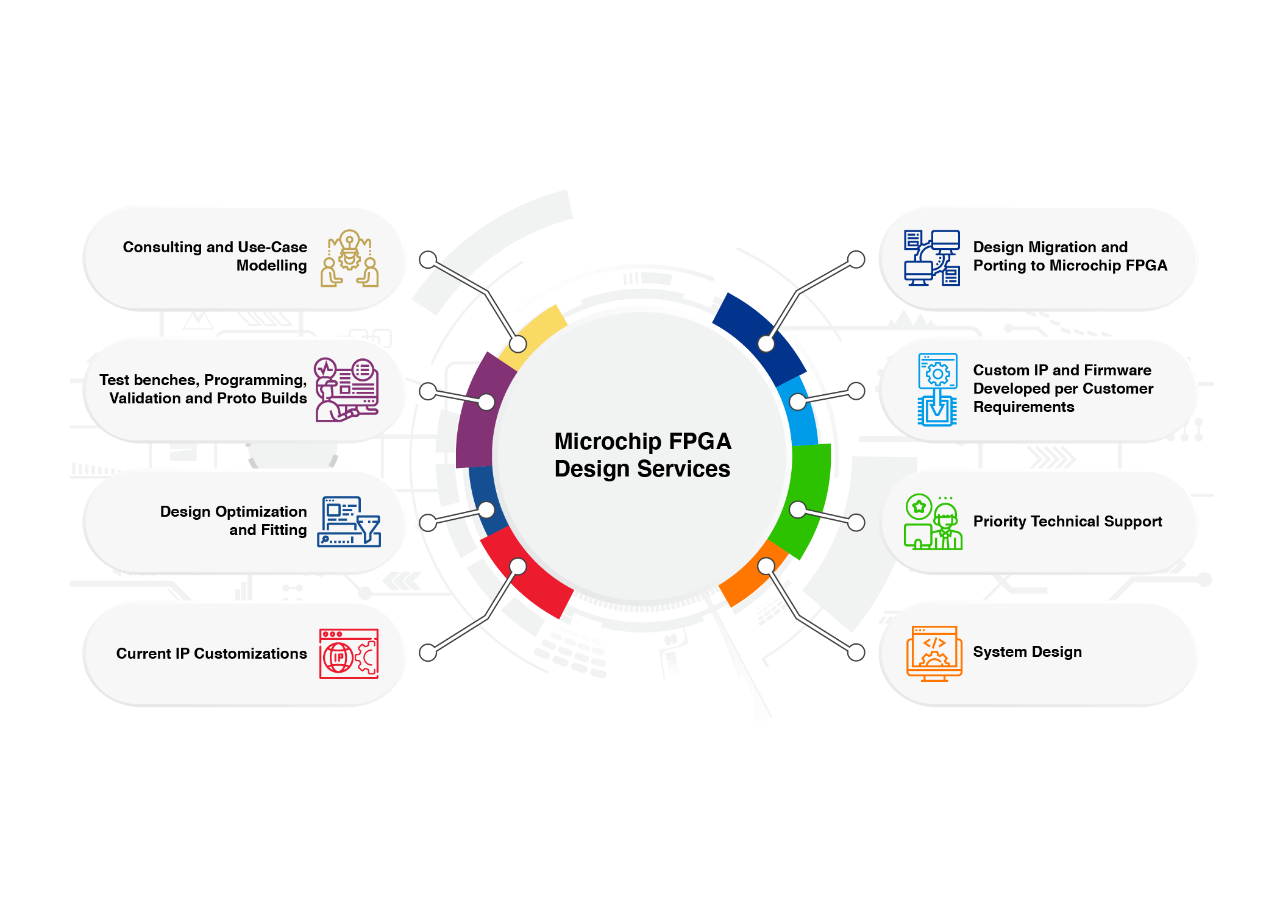Need Help?
Privacy PolicyLive Chat
PolarFire® Family of FPGAs for Compute-Intensive Edge Devices
Key Benefits of the PolarFire® Family of FPGAs
Empowering AI With Advanced Development Solutions
PolarFire FPGA Ethernet Sensor Bridge for NVIDIA® Holoscan
Seamlessly integrating high-speed sensor data with NVIDIA's AI-driven Holoscan platform, our Ethernet sensor bridge for NVIDIA Holoscan is an essential solution for industries that use AI. This bridge enables advanced imaging capabilities in medical, industrial, automotive and other sectors.
In healthcare, NVIDIA Holoscan enhances medical imaging and robotic surgery by processing sensor data quickly for accurate diagnostics and interventions. The low-latency communication of the Ethernet sensor bridge allows cloud AI computations closer to data sources, improving system responsiveness and efficiency.


VectorBlox™ Software Development Kit (SDK)
Build the world's lowest-power and smallest-form-factor Artificial Intelligence (AI)/ML application on our award-winning PolarFire FPGAs using the CoreVectorBlox Neural Network IP and the VectorBlox Accelerator SDK.
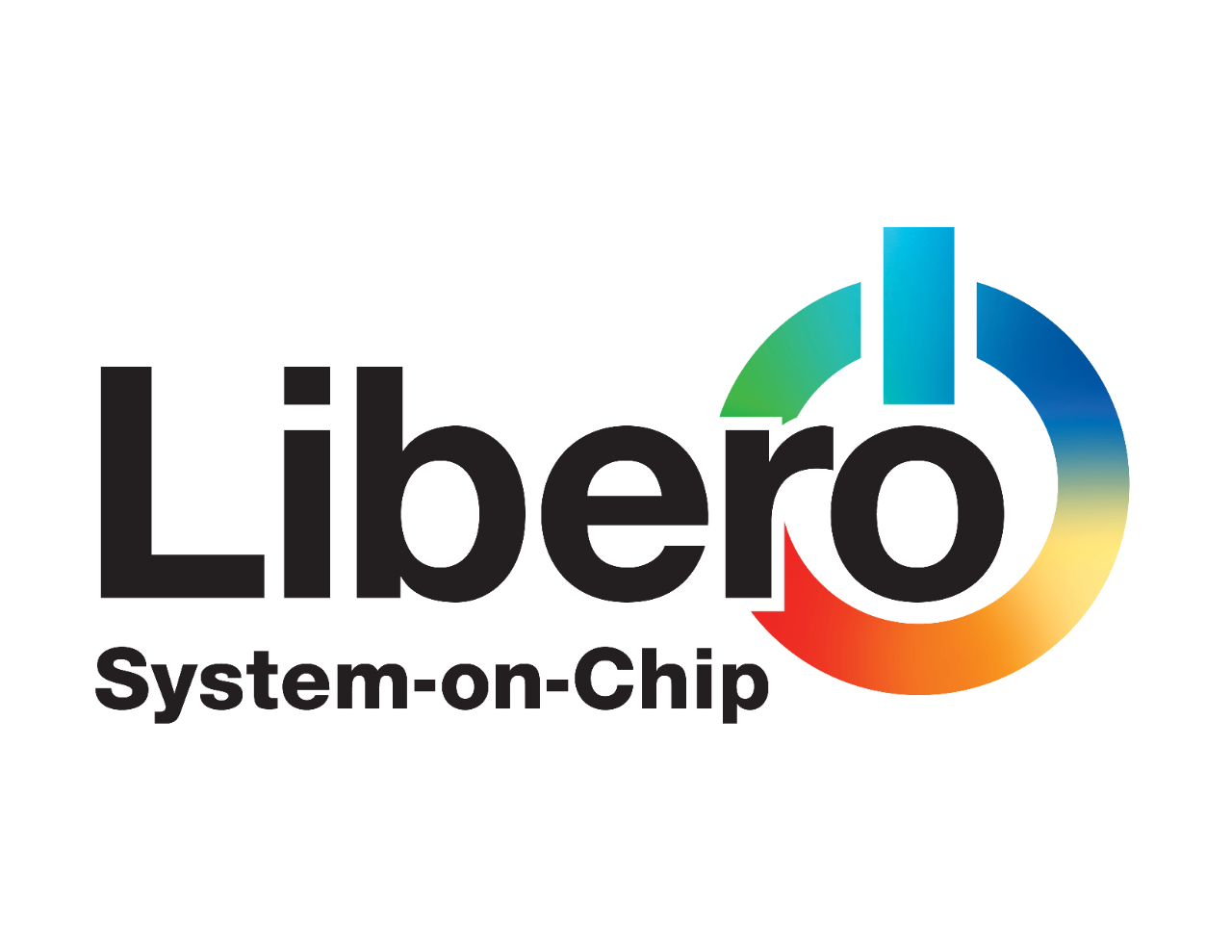
Libero® SoC Design Suite
Libero SoC Design Suite offers high productivity with its comprehensive, easy-to-learn and easy-to-adopt development tools for designing with our PolarFire SoC, PolarFire, IGLOO® 2, SmartFusion® 2, RTG4™, SmartFusion, IGLOO, ProASIC® 3 and Fusion families of FPGAs.
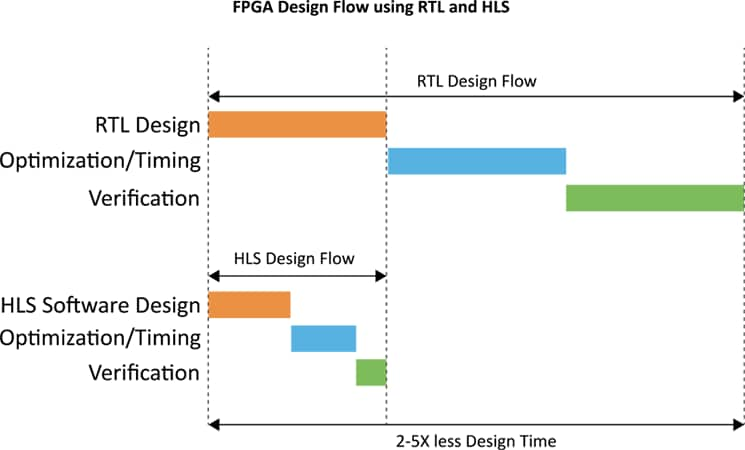
SmartHLS™ Compiler Software
SmartHLS compiler software raises the FPGA design abstraction from traditional hardware description languages to C/C++ software, enabling shorter design time, easier verification and faster time to market for designs using our FPGAs.
Explore Our Smart Embedded Vision Partner Ecosystem
Our extensive network of trusted design partners includes IP providers and hardware design services. Whether you're building from scratch or optimizing for performance and efficiency, you can leverage our ultra-low-power camera modules, reference designs and design partner ecosystem for the expertise and solutions to accelerate your smart embedded vision application.

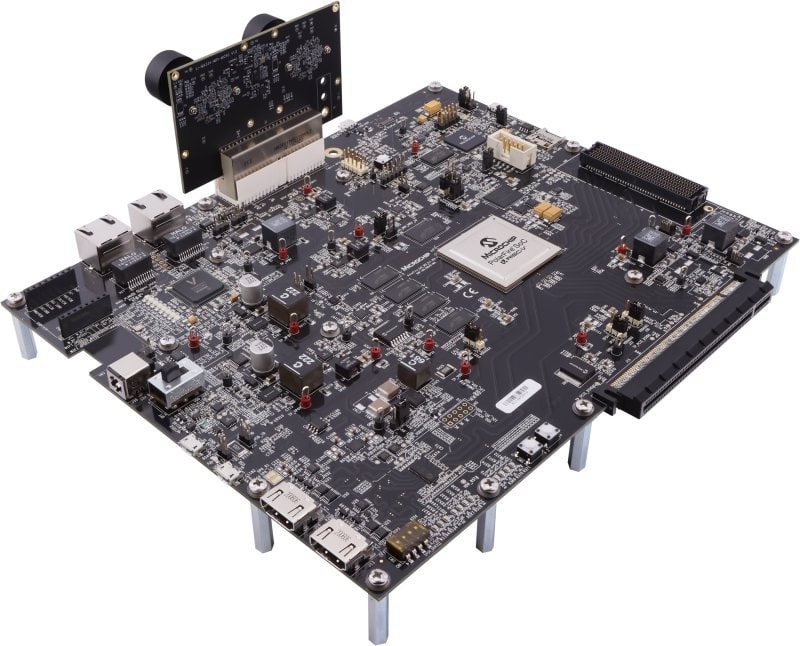
PolarFire SoC Video Kit
The PolarFire SoC Video platform is a full-featured RISC-V® SoC FPGA kit that supports dual 4K MIPI® CSI-2® cameras, HDMI® 2.0 with FMC-based expansion, USB 2.0, SD Card, eMMC, PCIe® Gen 2x4 endpoint or root port, and a mikroBus™ connector.
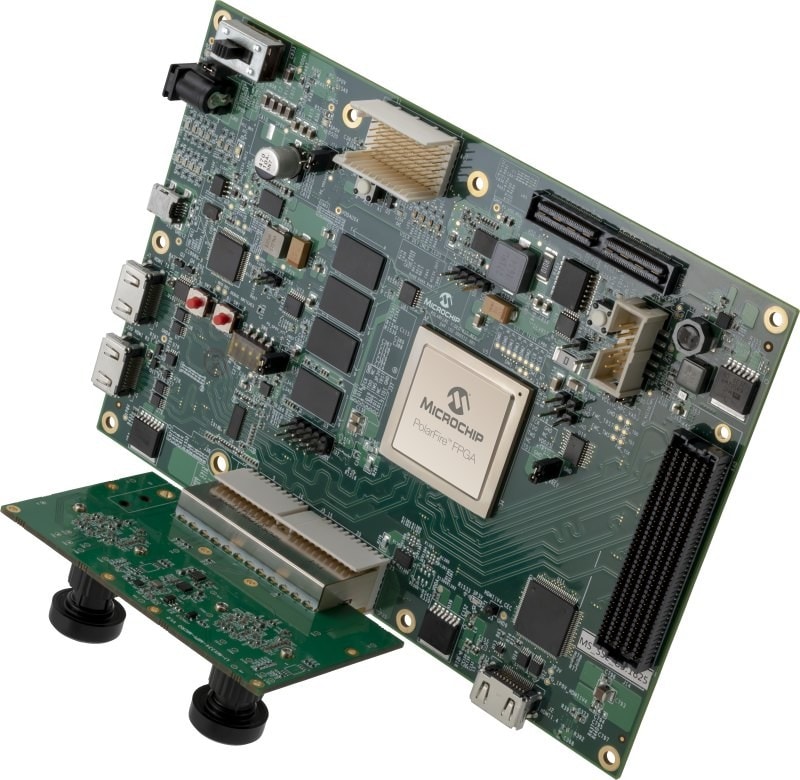
PolarFire Video Kit
Evaluate 4K image processing and rendering using dual camera sensors, numerous display interfaces and popular imaging and video protocols including MIPI® CSI-2® TX, MIPI CSI-2 RX, HDMI® 1.4 TX, HDMI 2.0, DSI and HD/3G SDI.
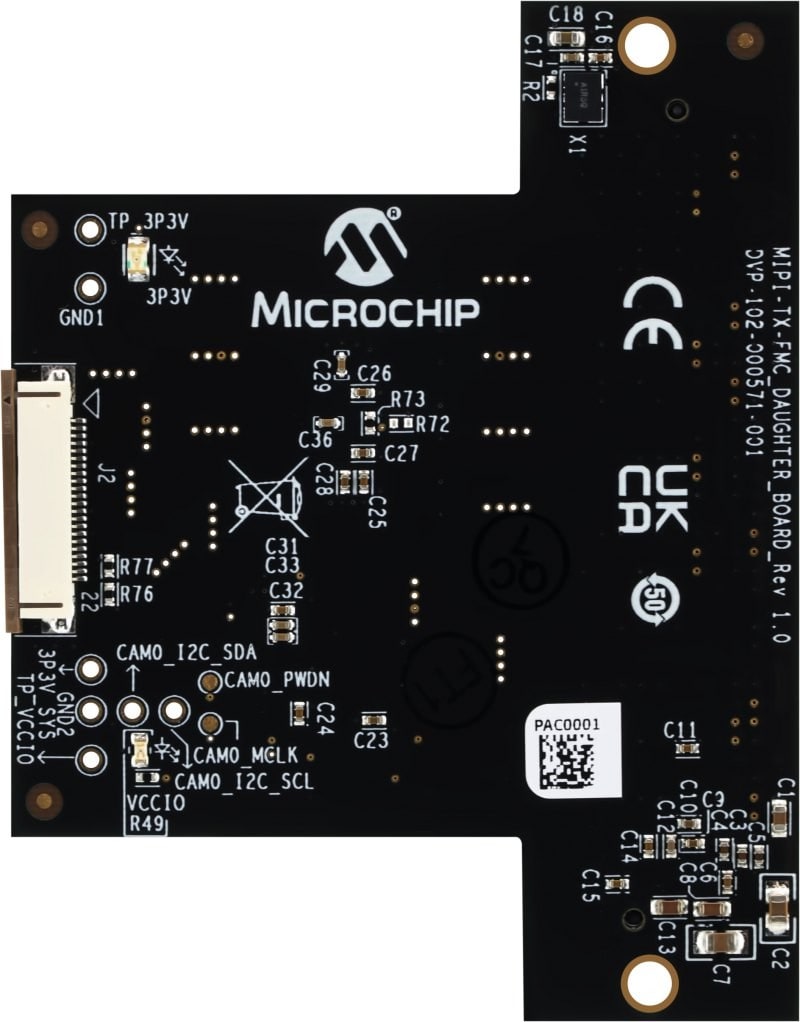
2.5G MIPI® Transmit FMC Daughter Card
Designed for MIPI transmission applications, this optimized FMC card supports data rates up to 2.5 Gbps per lane for 4K60 resolutions on the PolarFire® FPGA family.
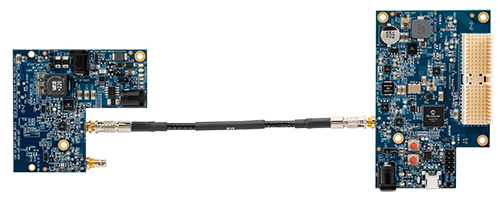
CoaXPress® FMC Daughter Card
This FMC daughter card is a hardware evaluation platform for evaluating and testing the 12.5G CoaXPress protocol.
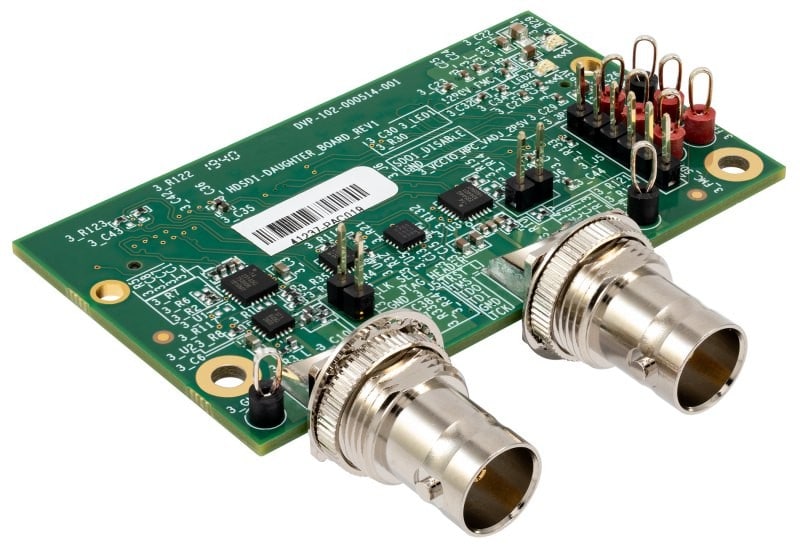
Serial Digital Interface (SDI) FMC Daughter Card
This daughter card is a hardware evaluation platform for evaluating and testing the SDI IP.
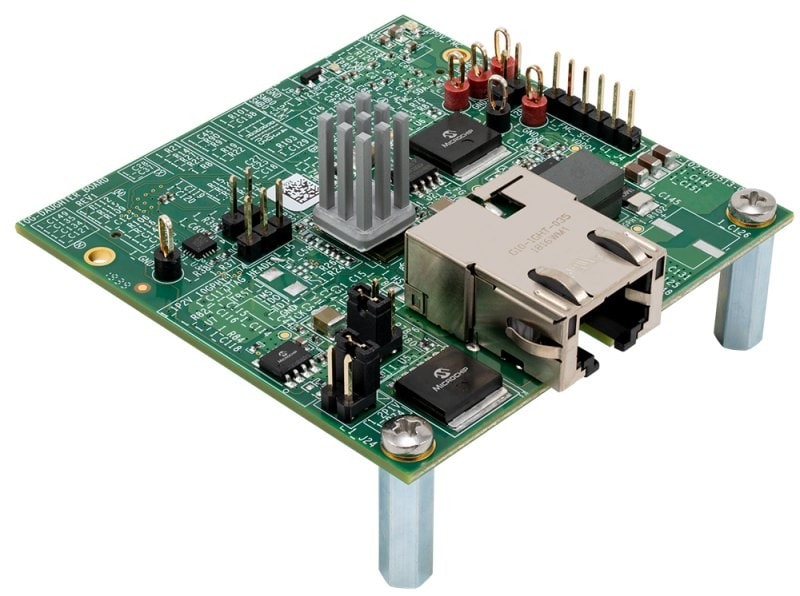
USXGMII FMC Daughter Card
This FMC daughter card is a hardware evaluation platform for evaluating and testing the quadrate PHY IP.
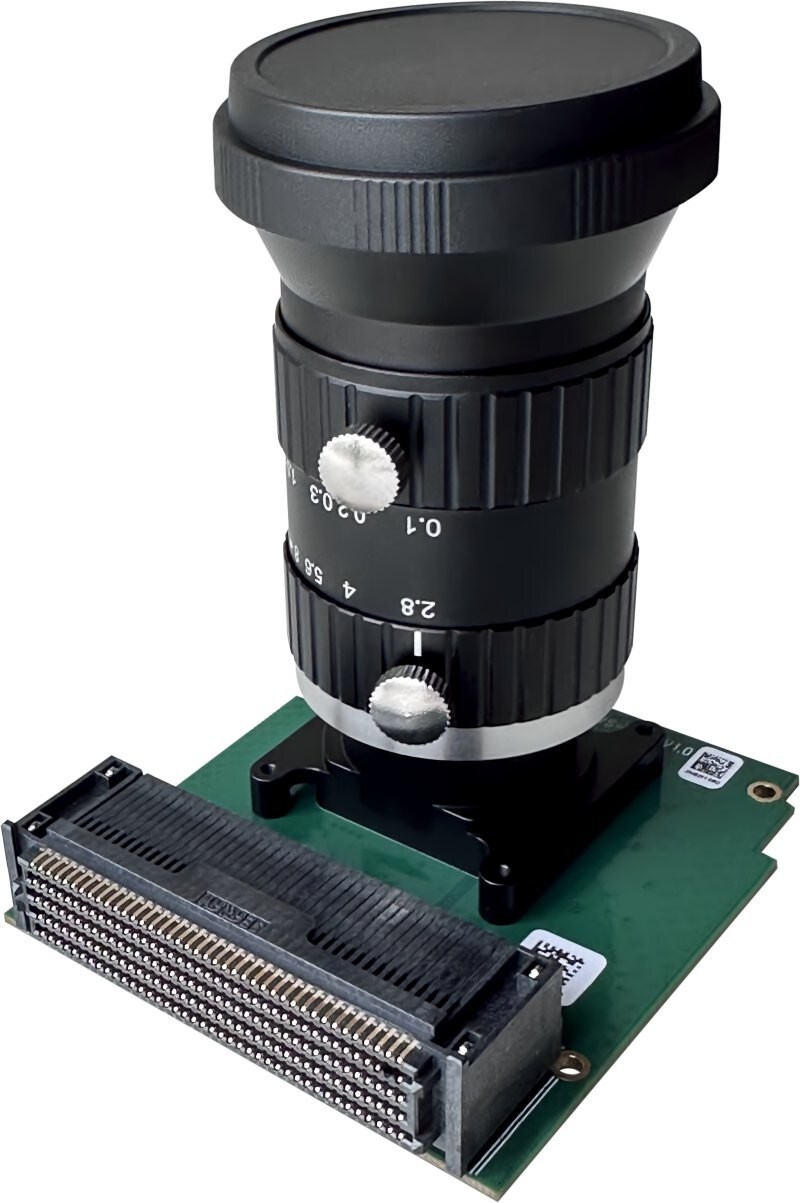
SLVS-EC™ FMC Daughter Card
This FMC daughter card is a dedicated platform for evaluating and testing the SLVS-EC receiver IP with PolarFire® FPGAs.
Demonstration Application Designs
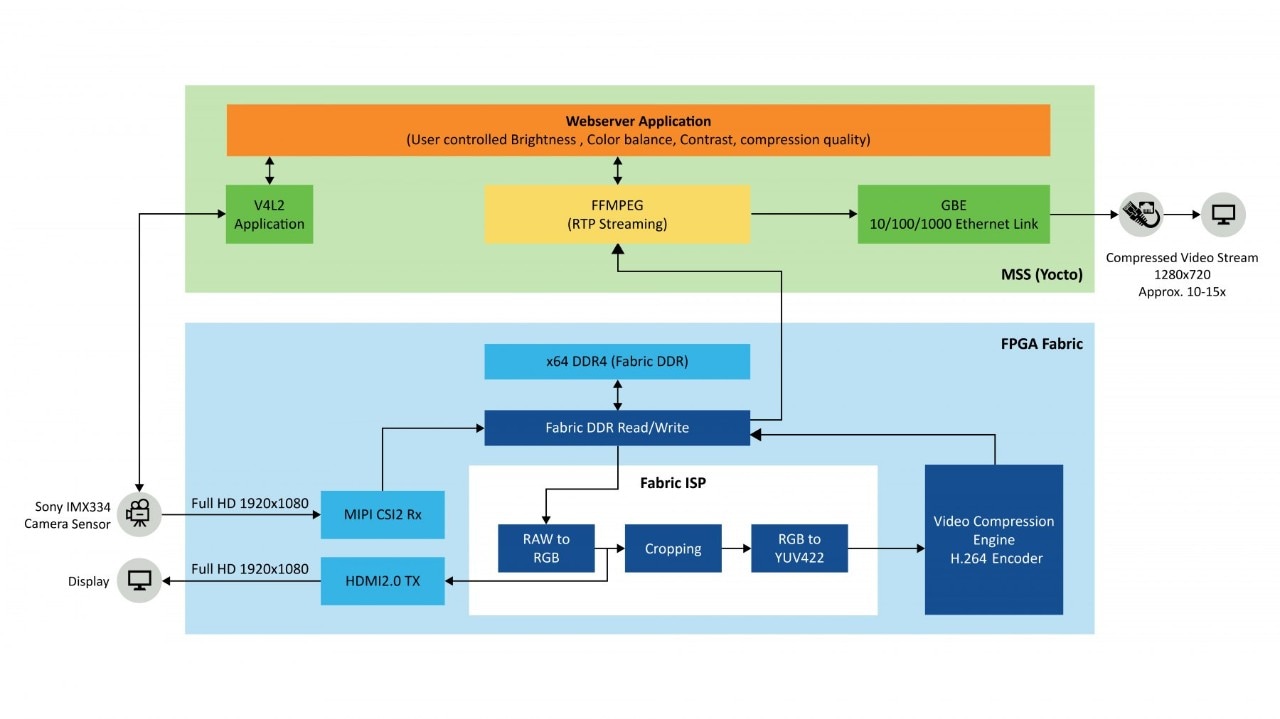
PolarFire® SoC H.264 Video Compression Design
The PolarFire SoC video kit comes pre-programmed with an out-of-the-box video compression demonstration using H.264. It showcases the input of a full HD video stream, which is processed and compressed within the FPGA fabric and then run through FFMPEG running on Linux® on the RISC-V® subsystem.
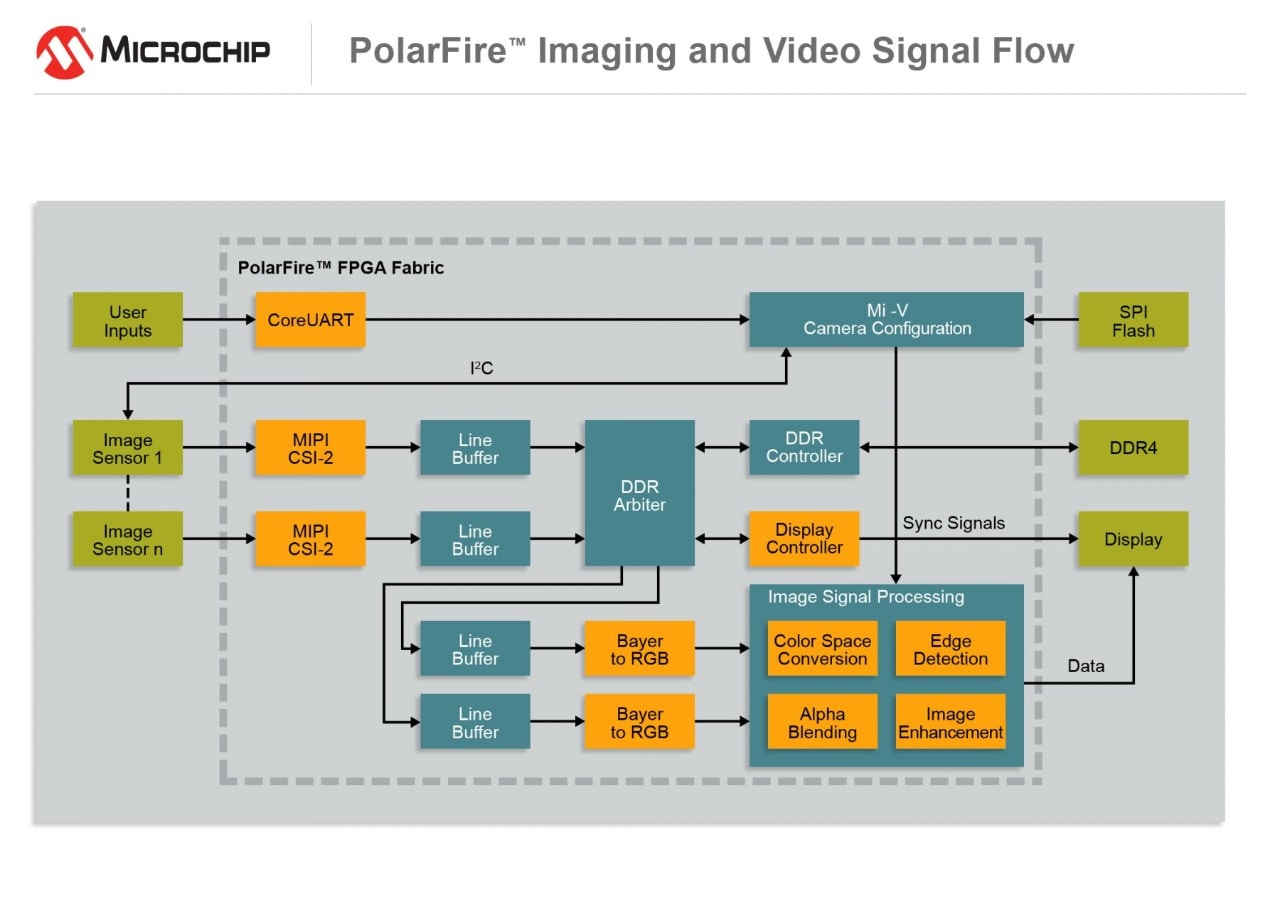
PolarFire® FPGA 4K Dual Camera Video Design
- MIPI® CSI-2® RX to read the 4K dual camera input
- Color Filter Array (CFA) to Red, Green, Blue (RGB) conversion
- Display controller, Picture in Picture (PIP)
- Output via HDMI® 1.4 TX port, 4K video output via HDMI 2.0 TX port
- Edge detection, image enhancements, histogram plot of live video

PolarFire® FPGA SLVS-EC™ Design
This design demonstrates how the IMX-530 camera sends SLVS EC RX data to the PolarFire video kit. Image processing includes Bayer interpolation, gamma correction and enhancement IPs to refine the raw camera image. The camera input video is displayed on an HDMI® monitor through the HDMI 2.0 TX port, supporting full HD resolution. A GUI unifies image enhancements such as contrast, brightness and color balance across all video outputs.

Generate and Display MIPI® CSI-2® Video
With two designs for a two-lane MIPI configuration for full HD video and a four-lane configuration for 4K video at 120 fps, you can learn how to generate MIPI CSI-2 video and display the video on a Raspberry Pi® 4 Model B using the PolarFire® Video Kit and MIPI Transmit FMC card.
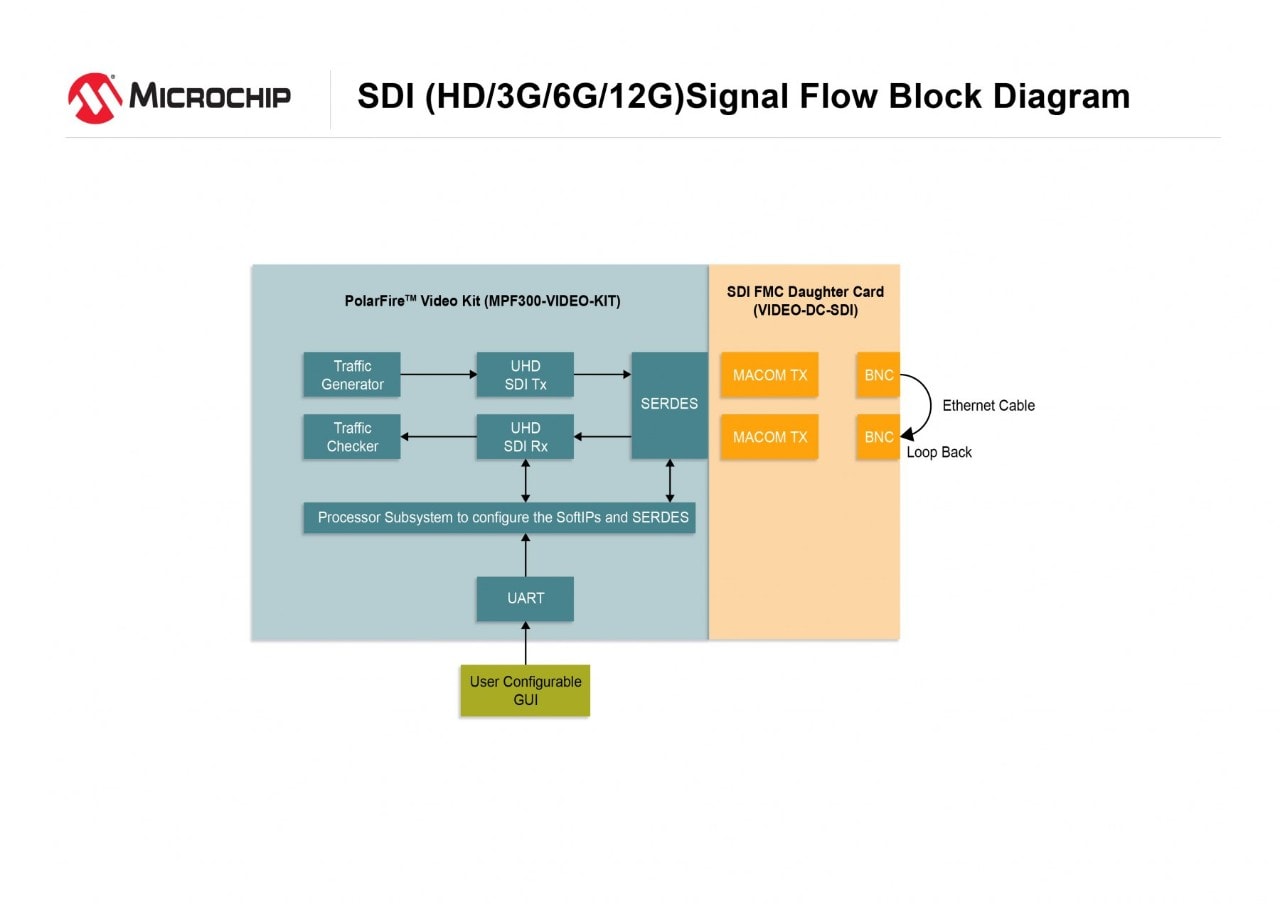
PolarFire® FPGA 12G-SDI Design
A PolarFire device converts real-time video data from a dual camera sensor (over MIPI® CSI-2®) is to a YCbCr 422 format and transmits it using the 12G-SDI IP over the 12G PolarFire FPGA transceivers. This data loops back to the PolarFire device via an SDI daughter card and is displayed over HDMI® 2.0.
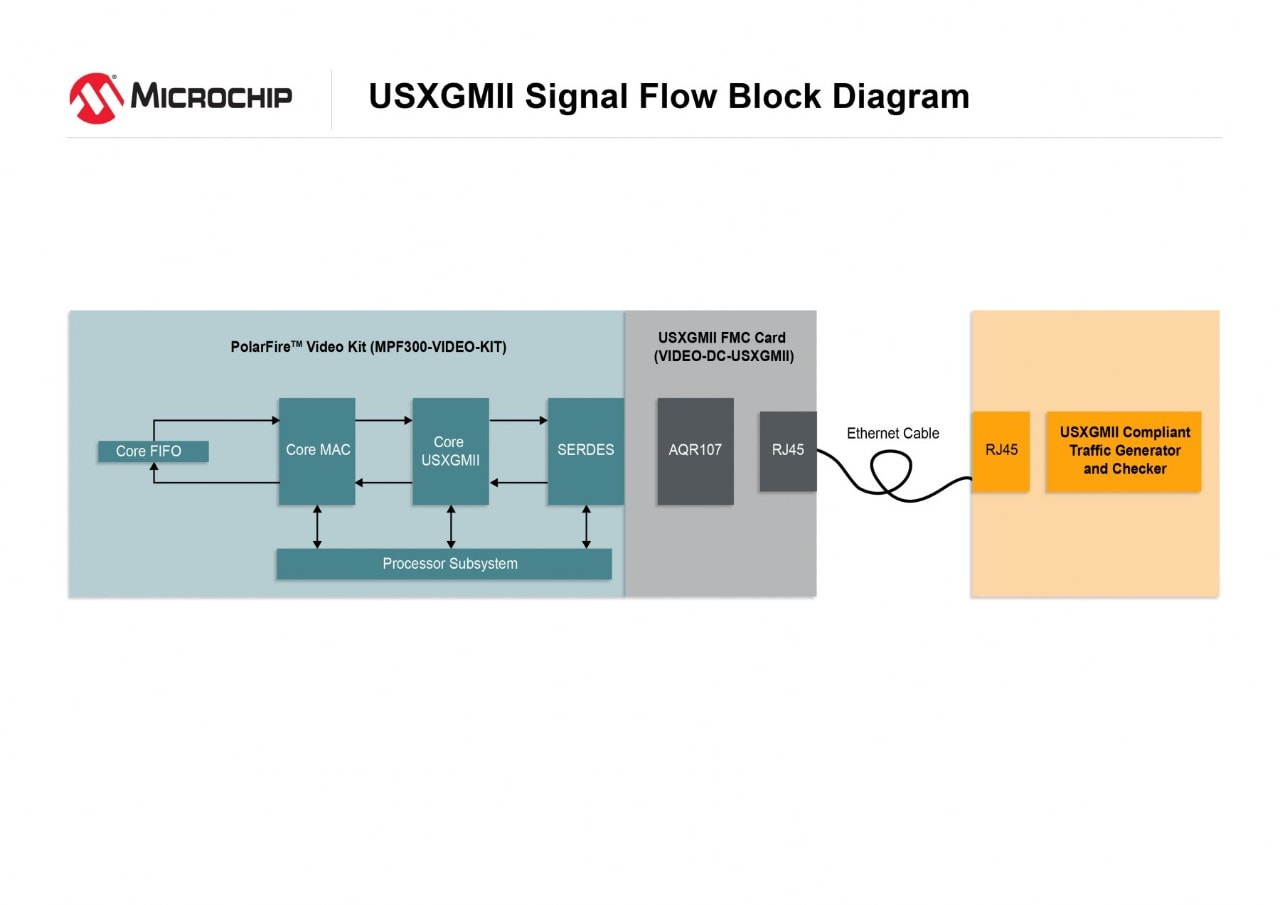
USXGMII
A test module transmits Ethernet traffic to the USXGMII IP on the PolarFire® device through a multi-gigabit Ethernet PHY (10 Gbps/5 Gbps/2.5 Gbps/1 Gbps). This data loops back to the test module through the PHY where it checks for and displays CRC error information.
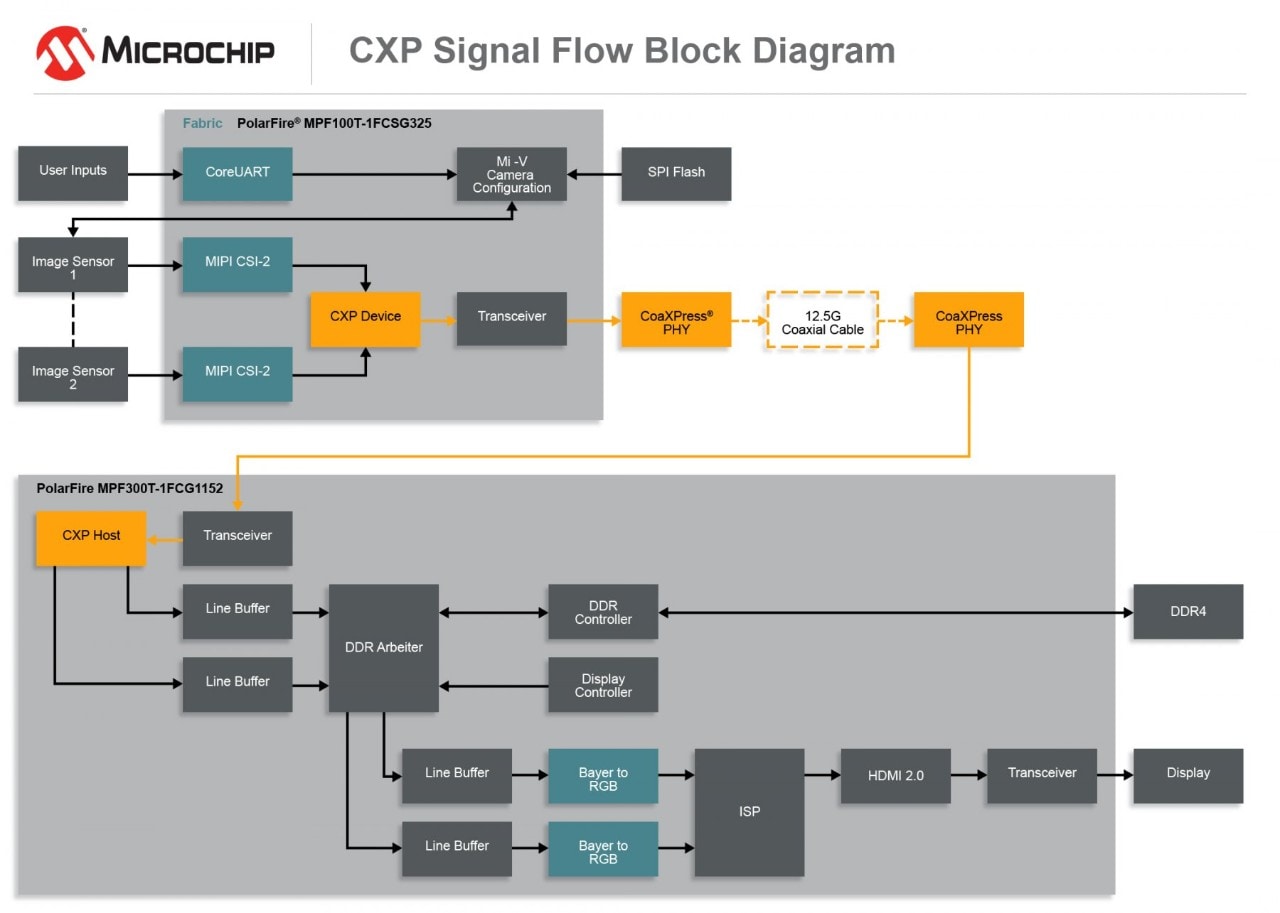
PolarFire® FPGA 12G CoaXPress® GenICam® Design
This updated Generic Interface for Cameras (GenICam)-compliant design is interoperable with standard frame grabbers. A PolarFire device converts real-time video data from a dual camera sensor to CoaXPress data using the MIPI® CSI-2® interface and then transmits this data over a coaxial cable to a CoaXPress device board to a second PolarFire device.
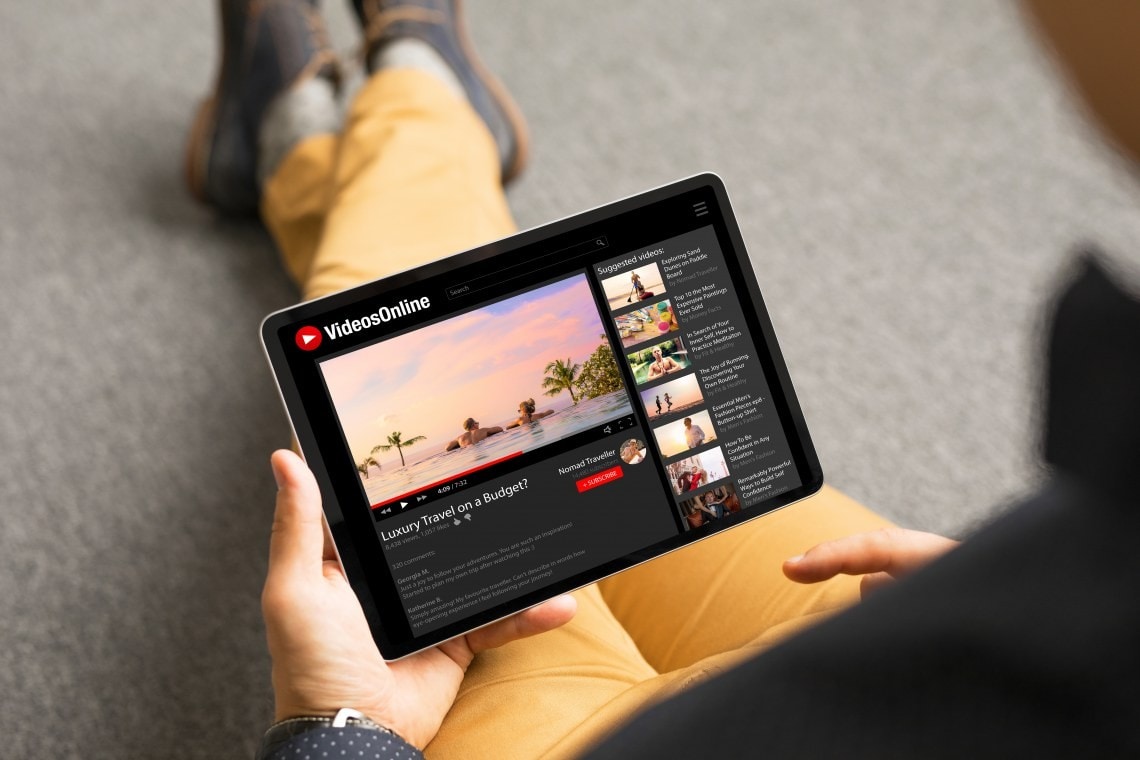
Smart Embedded Vision for Industrial Applications

Design Week
PolarFire® SoC Video Kit Overview
Watch this video to learn more about the PolarFire SoC Video Kit, the industry’s first RISC-V® SoC FPGA-based, full-featured embedded vision development platform targeting secure, reliable, and power-efficient vision applications at the edge.
